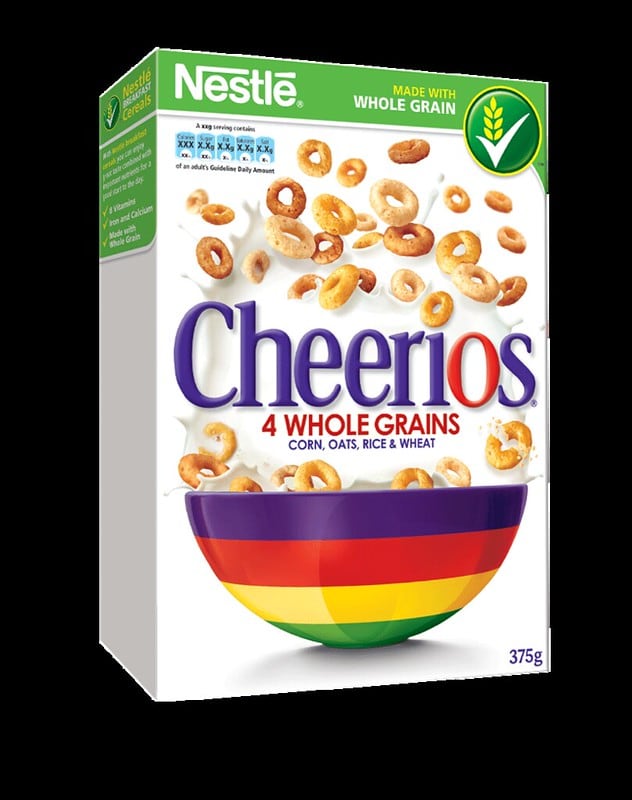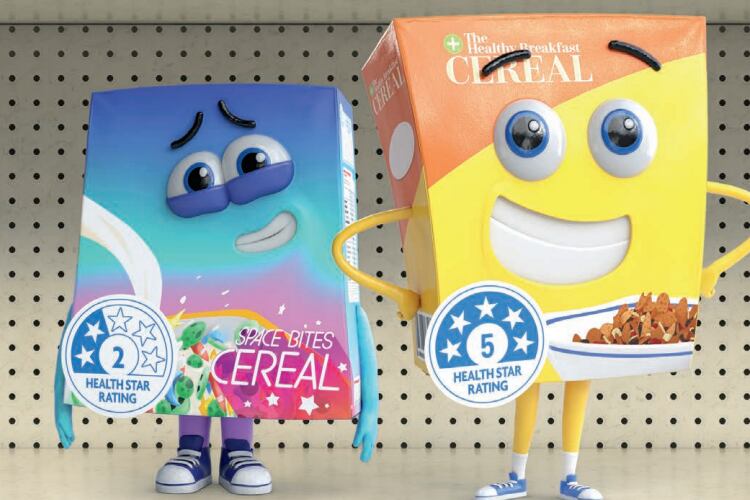Swiss KitKat-to-Maggi manufacturer Nestlé has revealed plans to report yearly on the nutritional profile of its global portfolio, starting in its 2022 Annual Report. In 2023, the group will also begin to report on local portfolios in 14 countries using their respective government-endorsed front-of-pack labelling systems.
“These commitments build on the belief that transparency is key to trust,” the company said as it announced the news. “They are also an extension of the company's long track record of helping people enjoy a variety of foods and beverages as part of a balanced diet.”
Nestlé said that the commitment is part of its work to grow and expand ‘certain segments’ of its portfolio, including what it described as ‘nutritious plant-based and children’s products’. “We aim to continuously improve the nutritional value of our foods and beverages using both external and internal benchmarks, and the company will leverage its R&D capabilities for such purpose,” a spokesperson for the company told FoodNavigator.
The world’s largest food manufacturer is working to advance the nutritional profile of its products through a strategy leveraging both reformulation and fortification. In 2021, the company sold 124.6 billion servings of ‘affordable nutrition’ with micronutrient fortification. It has also achieved a 5.1% reduction in added sugars in Nestlé products since 2017.
However, the spokesperson did not reveal whether Nestlé has set specific time-bound targets for either reformulation or the proportion of total sales it wants come from better-for-you segments of its portfolio, which includes categories like confectionery, breakfast cereals and prepared meals as well as waters, dairy and coffee.

External benchmarking using the Health Star Rating system
Nestlé revealed it will benchmark its food and beverages against the Australian Health Star Rating system. This will provide a single basis of comparison for its broad global portfolio, with the exception of specialised nutrition products. The company will report separately on the proportion of its portfolio of specialized nutrition offerings consisting of products sold by the Nutrition, Nestlé Health Science and pet care businesses.
HSR - a voluntary front of pack labelling scheme adopted in Australia and other countries b- considers the total energy of a food, the amount of positive nutrients and ingredients such as fibre, protein and legumes, as well as the amount of nutrients of concern such as sugar, saturated fat and salt. Products are then given a score from zero-point-five to five stars.
“The HSR was developed by the Australian state and territory governments in collaboration with industry, public health, and consumer groups. It is based on the UK Nutrient Profiling model originally developed to regulate food advertising,” the spokesperson explained. “We carefully assessed a wide range of existing nutrient profiling systems available to report at global level on the nutritional profile of our portfolio. We chose HSR because it is widely recognized by investors and stakeholders. It is also used by the Access to Nutrition Index to compare food portfolios of the 25 largest F&B companies globally.”
Nestlé currently ranks first overall in the Access to Nutrition Index, scoring well in areas like governance and engagement. In the latest Index, the company is ranked third in terms of its product profile, with Access to Nutrition noting an ‘improved performance’ compared to 2018 thanks to ‘higher sales from healthier categories’ and divestments of ice cream and confectionery businesses in the US.
Nevertheless, Nestlé has attracted criticism for the healthfulness of its portfolio. Last year, the company said that it would update its nutrition and health strategy after the Financial Times published leaked internal documents acknowledging that nearly 70% of its everyday food and drink products, making up about half of Nestlé’s CHF92.6bn total annual sales, do not meet a 'recognised definition of health' and that 'some of our categories will never be healthy'. According to the presentation, given to top executives in 2021, only 37% of Nestlé’s food and beverages products, excluding pet food and specialised medical nutrition, achieve a rating above 3.5 stars under Australia’s Health Star Rating.
Is HSR an effective benchmarking tool?
Spearheaded by Australia and New Zealand, the voluntary Health Star Rating scheme was launched in 2014. The official HSR website states that the system is designed to help consumers 'quickly compare the general nutritional profile of foods within the same category of packaged and processed goods'. It allows comparison of similar products, for example white versus whole grain bread, but does not allow comparison across categories.

According to data from the Obesity Evidence Hub, the system encourages reformulation efforts as well as influencing consumer choice. A New Zealand study found most products displaying Health Star Ratings in that country had been reformulated to some extent. A similar analysis for Australia found that the average energy density of food products carrying Health Star Ratings was lower than before the labelling system was introduced.
However, like other calculations based on positive and negative nutrients such as NutriScore, the Health Star Rating algorithm has also faced significant criticism. According to research on its application in Australia, 57% of new discretionary (mostly energy-dense, nutrient-poor) food products displaying an HSR in the country are doing so with a rating of ≥2.5 health stars. The researchers say this is 'effectively undermining dietary guideline recommendations'.
In a separate paper, the same researchers also found the HSR in Australia is mostly displayed on products considered ultra-processed foods, with three-quarters of UP food rating above 2.5 HSRs. They concluded this suggests the HSR system has 'technical weaknesses, a design flaw and governance limitations' and is based on a 'reductionist view of nutrition science'.
For its part, Nestlé dismissed the association between ultra-processed foods and inherently unhealthy foods. “Food processing—e.g., cooking, baking, fermenting—has been used for centuries to convert raw ingredients into safe, nutritious, enjoyable foods. Food preparation at scale is not fundamentally different from cooking at home. There is no sound scientific validation for linking all processed food to obesity. In contrast, diets high in—e.g., high in energy, sugar, or fat—may contribute to weight gain and obesity,” the spokesperson told us.
At a consumer level, Nestlé plans to continue to display locally relevant front-of-pack nutrition labelling schemes, such as Nutri-Score, on a voluntary basis or as required by authorities. Nestlé also couples its offering with consumption guidance and services to support balanced eating, the company said.
Sources
'Effects of a Voluntary Front-of-Pack Nutrition Labelling System on Packaged Food Reformulation: The Health Star Rating System in New Zealand.'
Nutrients
DOI: 10.3390/nu9080918
Authors: Ni Mhurchu C, Eyles H, and Choi Y-H.
'Cost-Effectiveness of Product Reformulation in Response to the Health Star Rating Food Labelling System in Australia.'
Nutrients
DOI: 10.3390/nu10050614
Authors: Mantilla Herrera AM, Crino M, Erskine HE, Sacks G, Ananthapavan J, et al.
‘Do nutrient-based front-of-pack labelling schemes support or undermine food-based dietary guideline recommendations? Lessons from the Australian health star rating system.’
Nutrients
DOI: 10.3390/nu10010032
Authors: Lawrence M, Dickie S, Woods J.
‘Analysing the use of the Australian Health Star Rating system by level of food processing.’
International Journal of Behavioral Nutrition and Physical Activity
DOI: 10.1186/s12966-018-0760-7
Dickie, S., Woods, J.L. & Lawrence, M.


